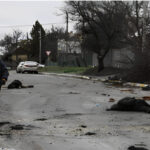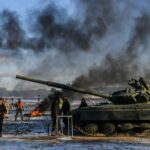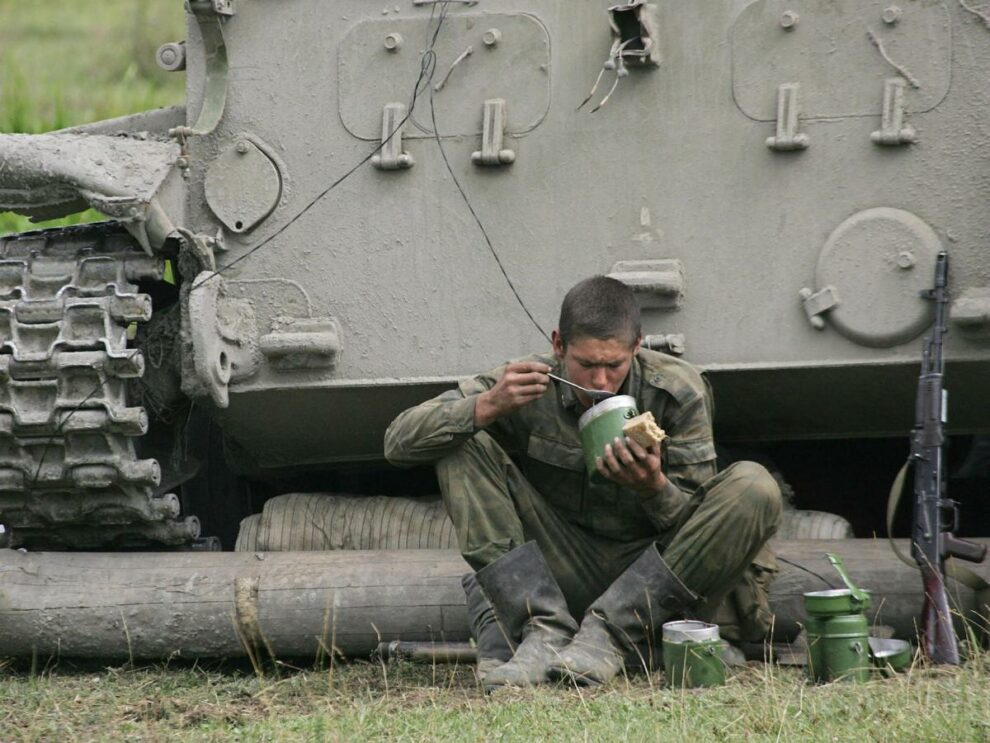After two months, the Russian assault on Avdiivka, a key Ukrainian strongpoint in eastern Ukraine’s Donbas region, appears to be petering out.
That does not mean the Russians are done with Avdiivka, however. While shifting resources to counterattacks elsewhere in the south and east, Russian forces in Ukraine apparently plan to lay siege to Avdiivka … without directly attacking it.
The key to this strategy: a new type of night-flying attack drone. If the drones can close Ukrainian supply lines into Avdiivka, the city’s garrison might have to retreat, even after holding out for months against tank and infantry assaults.
But if the Ukrainians can do to the drones what their comrades in the south have done—shut them down with electronic jamming—then Avdiivka might hold.
“The overall situation for the Ukrainian forces [in Avdiivka] has stabilized, as the Russian offensive appears to have reached its peak,” analysis group Frontelligence Insight reported. “Russian forces have lost eagerness to assault and the number of operational equipment has been severely reduced.”
“However, the logistical situation in Avdiivka has deteriorated for Ukrainian forces further,” Frontelligence Insight added. “Despite employing nighttime supply routes to evade drone targeting, reports from the ground indicate that Russian forces are now utilizing FPV drones with thermal night-vision cameras, making it difficult to supply forces even at night.”
First-person-view, or FPV, drones are small, short-range drones that operators control via radio, often while wearing virtual-reality headsets. Packing a pound or so of explosives, a two-pound FPV—which might cost $500—functions as a sort of human-guided precision munition.
Both the Ukrainian and Russian militaries deploy FPV drones by the thousands along the 600-mile front line of Russia’s 22-month wider war on Ukraine. The drones are everywhere—but not necessarily all the time. Most drones lack infrared cameras, meaning they’re not terribly useful at night, when their operators might not be able to see their targets.
So the dark was a refuge from drone attacks. And, for the Ukrainians, an opportunity to slip ammunition, supplies and fresh troops into Avdiivka along the 00542 road or some narrower dirt track. Russian troops are no farther than a mile from the road.
It was these vital supply lines that allowed the Ukrainians to hold Avdiivka against two monthlong waves of Russian assaults. In October, Russian regiments and brigades massed tanks and fighting vehicles for flanking assaults north and south of Avdiivka.
But the vehicles had to roll through pre-sighted artillery and drone kill-zones just to reach their starting points for attacks on Ukrainian positions. The Russians lost hundreds of vehicles and thousands of people in these assaults—without significantly advancing.
“I’ll even reveal a secret,” said Arty Green, a famous Ukrainian artillery officer. “There’s a competition between our brigades. We strike one target, then we see a neighboring brigade doing the same, then another one.”
In November, Russian commanders switched up their methods. Instead of attacking with vehicles, the regiments sent in infantry, on foot. Including so-called “Storm-Z” units mostly made up of recently-mobilized and poorly-trained “mobiks.”
These infantry assaults ran into Ukrainian tanks from brigades that Kyiv redeployed from the south following the culmination of its summer counteroffensive. Many more hundreds, or even thousands, of Russians died—but they did succeed in advancing a mile north of Avdiivka and to the city’s outskirts in the south.
Owing to the acquiescence of the Russian population, the Kremlin is willing, and able, to absorb casualties that would collapse governments in free societies. But even the Russians can do only so much dying. After two months and thousands of fatalities, the Russian effort directly to capture Avdiivka seems to be ending.
The effort indirectly to capture it just is beginning, however. “There is a potential shift in the Russian approach towards besieging defenders rather than pursuing the originally planned assault or encirclement of the city, although assaults will continue,” Frontelligence Insight predicted.
Single-use FPV drones with infrared cameras are the key. Adding night-vision to an FPV drone might double its cost, which is why the Ukrainians have prioritized adding infrared cameras to larger, reusable drones called “Baba Yagas.”
But doubling the per-unit cost of an FPV in order to give it around-the-clock capability might be worth it if that means closing the Ukrainian supply lines into Avdiivka.
The Ukrainian armed forces don’t usually fight to the last man, although Mariupol is an exception. Instead, they tend to trade space for time while exacting a toll in people and equipment for every yard the Russians advance.
So a Ukrainian garrison will quit its city if there’s an imminent threat of getting cut off. It happened in Lysychansk and Severodonetsk. It happened in Bakhmut. It could happen in Avdiivka, too, if Russia’s night-drones make resupply impossible.
If there’s good news in the Russians’ apparent shift to nighttime drone-raids, it’s that the Ukrainians know how to counter drones. With electronic warfare: radio-jammers that sever the links between drones and their operators. An intensive jamming campaign was the key to the Ukrainian marine corps’ successful crossing of the Dnipro River in southern Ukraine in October.
But expensive E.W. equipment is in short supply. And jammers tend to ground Ukrainian drones as readily as they ground Russian drones, so any defensive jamming campaign has to take into account a possible loss of offensive capability.
Watch the skies, especially at night. It’s there that the third, and potentially decisive, fight for Avdiivka might rage.
Source : Forbes















